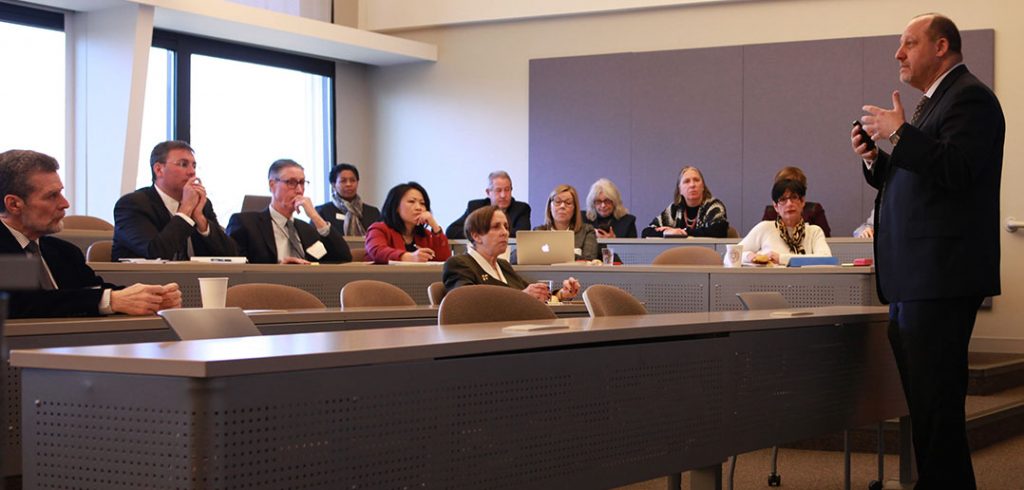It doesn’t matter whether students are from an affluent family on the Upper East Side or a disadvantaged family in the South Bronx: In today’s school environment, they are under a tremendous amount of stress, according to a Fordham education professor.
“There’s a lot of suffering out there; addiction, eating disorders, a sense of boredom and that something is missing,” said Amelio A. D’Onofrio, Ph.D. “And with that comes a profound sense of loneliness, a disconnection, anger, and rage.”
D’Onofrio, clinical professor and director of the Psychological Services Institute in the Graduate School of Education, presented hard numbers from a recent study from the Center for Disease Control of high-school-age students representing a cross section of race and class: 30 percent said that they feel sad or hopeless, 18 percent seriously considered suicide, 14 percent made a plan to kill themselves, and 10 percent attempted suicide.
D’Onofrio shared his remarks with a group of school superintendents from the tri-state region, who gathered at Fordham’s Westchester campus. The March 2 talk, “How the Pressures of Contemporary Life Can Lead to Disconnection, Despair, and Violence,” was chance for GSE faculty members to share research and gather front-line feedback from area educators.
A Rise in Hateful Discourse
The audience of superintendents described seeing “a huge increase in school depression and anxiety,” “more female aggression,” “an inability to regulate responses,” “students [who]are more debilitated,” and an increase in social media and cyber bullying, which is creating a “hateful discourse.”
D’Onofrio said that in the past, once students left school grounds the peer pressures from classmates was left behind, too. But today, with the omnipresence of cell phones and social media, there is no leaving the pressures behind.
‘Now students are physiologically activated all the time,” he said. “The layers of engagement have increased exponentially.”
And along with increased engagement comes stress, said D’Onofrio, though he prefers the term “trauma” to describe what kids are going through today. In addition to peer-to-peer tensions, factors outside of the classroom play a significant role. For some students, chronic poverty and gang violence compound the problem. For others the demands of academic/athletic performance and too many extracurricular activities take a toll.
D’Onofrio took comments from the audience. One supervisor noted that teachers are not trained to deal with trauma, he said, they’re trained to teach; therefore, teachers may not understand the state of mind students are in when they arrive in to class. Another complained of an increase need for counseling that was met with a decrease in funding for such services—all of it playing out against the “thump, thump, thump of social media.”
Steve Jambor, Ph.D., FCRH ’72, GSE ’74, ’76, GSAS ’78, president of Westchester-Putnam School Boards Association, said the nation is in the midst of a “social health crisis,” but that, unfortunately, policymaking is still based upon a definition of “emotional ” that was written before the information age.
A Desire to Connect
“Emotional disturbance [today] isn’t what it was years ago he said. “And policymakers don’t want to know about that and deal with the madness that is arriving today.”
But while students may exhibit outward signs of not wanting help, D’Onofrio said the deeper desire is always to connect, and that’s where teachers can make a difference.
“Stress really sets in motion the ability to self-regulate and the ability to develop a basic sense of trust; when that doesn’t happen, kids withdraw,” he said. “We need to be nurturing and caring, but that doesn’t mean we don’t hold them accountable.
“Be there, challenge, and confront, that’s when a kid feels cared for,” he said.
The event was sponsored by the GSE.


